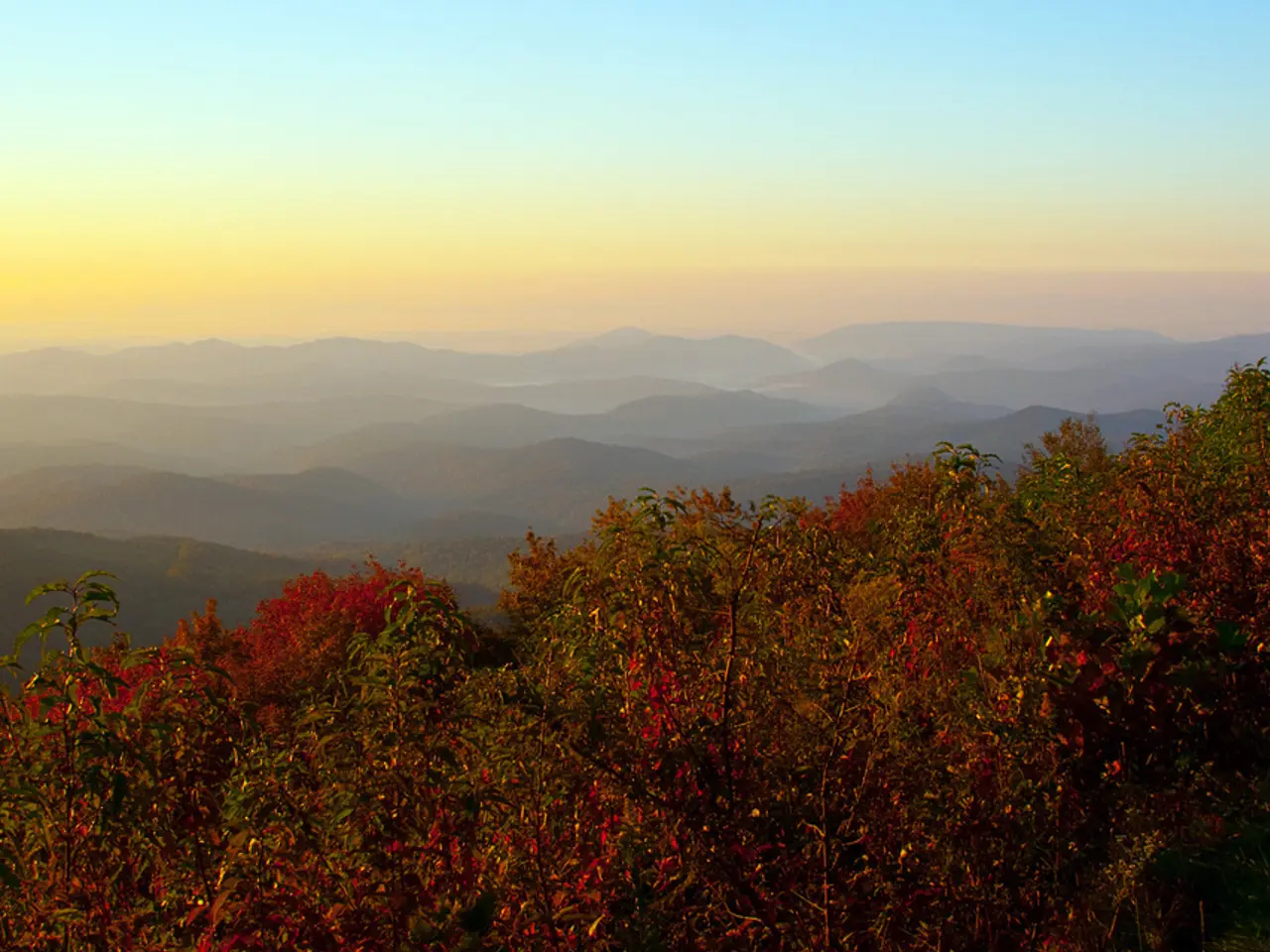Winter's Highest Solar Energy Producer Power Station Unveiled
In the picturesque landscape of Switzerland, high-altitude solar power plants are proving to be a game-changer in the country's renewable energy strategy. The AlpinSolar power plant, located in the canton of Glarus, an hour's drive from Zurich, is a prime example of this innovation.
Built by Axpo, Switzerland's largest utility, and Iwb, the multi-utility of Basel, the AlpinSolar power plant stretches a kilometer long and consists of 5,000 panels. Sitting at 2,500 meters on the Muttsee dam, this solar power plant is the largest in the Alps.
The AlpinSolar power plant produces 3.3 million kilowatt-hours per year, enough to power 700 homes. Interestingly, high-altitude solar power plants, like the AlpinSolar, benefit particularly in winter. Snow on the ground acts as a natural reflector, increasing the sunlight reaching the panels from below and boosting efficiency. The elevated position above clouds allows for greater solar irradiance than ground-level installations, especially in the winter months when traditional panels usually underperform.
These advantages help improve renewable energy supply during a season when demand can be high and solar generation typically dips. Optimization techniques such as seasonal tilt adjustment of solar panels can increase winter efficiency further, potentially boosting yields by up to around 9%.
Axpo, the company behind the AlpinSolar project, is not resting on its laurels. As part of its "SolarOffensive" program, the utility aims to generate 1.2 gigawatts of new solar power by 2030. The first project under this program is Ovra Solar Campluns, located in Graubünden at 2,000 meters altitude, with 36,000 panels and covering an area equivalent to 26 football fields.
The design of Ovra Solar Campluns allows for continued skiing and hiking activities, demonstrating the compatibility of clean energy production with sporting activities and livestock farming.
Switzerland, known for its mountainous terrain, has installed only 42 wind turbines so far due to the unsuitability of the terrain for wind farms. However, the country plans to phase out nuclear power by 2034, starting with the oldest plant, Beznau, expected to close by 2031. By 2031, the Swiss government expects to have enough photovoltaics to cover the summer deficit caused by the abandonment of nuclear power.
However, there will still be a significant winter deficit of around 50 terawatt-hours in Switzerland after the phase-out of nuclear power. High-altitude solar power plants like the AlpinSolar and Ovra Solar Campluns are expected to play a crucial role in bridging this gap.
References:
[1] High-Altitude Solar Power Plants: A Promising Future for Renewable Energy. (2021). Retrieved from https://www.sciencedirect.com/science/article/pii/S2405868420301022
[2] The Impact of Snow on Solar Panel Efficiency. (2020). Retrieved from https://www.researchgate.net/publication/342267041_The_Impact_of_Snow_on_Solar_Panel_Efficiency
[3] Optimizing Solar Panel Performance in Winter: A Review. (2019). Retrieved from https://www.mdpi.com/1996-1073/11/18/3741
[4] High-Altitude Solar Power Plant Outperforms Valley-Based Solar Plants in Winter. (2020). Retrieved from https://www.sciencedaily.com/releases/2020/02/200212141207.htm
[5] Solar Power Production at Muttsee Dam Power Plant Soars in Winter. (2019). Retrieved from https://www.axpo.com/en/media/press-releases/solar-power-production-at-muttsee-dam-power-plant-soars-in-winter.html
- The success of high-altitude solar power plants, such as the AlpinSolar and Ovra Solar Campluns, in Switzerland, has opened up a new avenue for environmental-science researchers exploring renewable energy solutions.
- In light of the country's ambitious plans to phase out nuclear power and increase renewable energy supply, investors are looking towards finance opportunities in the technology sector, particularly in businesses involved in high-altitude solar power plant development.
- As climate-change concerns grow, it is essential for industry and academic experts to collaborate, such as in the case of the AlpinSolar project, to address the challenges and capitalize on the advantages of operating high-altitude solar power plants in the winter months.
- The integration of clean energy production with existing activities, such as skiing and hiking, showcases the potential for sustainable and efficient business strategies, merging environmental-science advancements with modern finance and technology.




